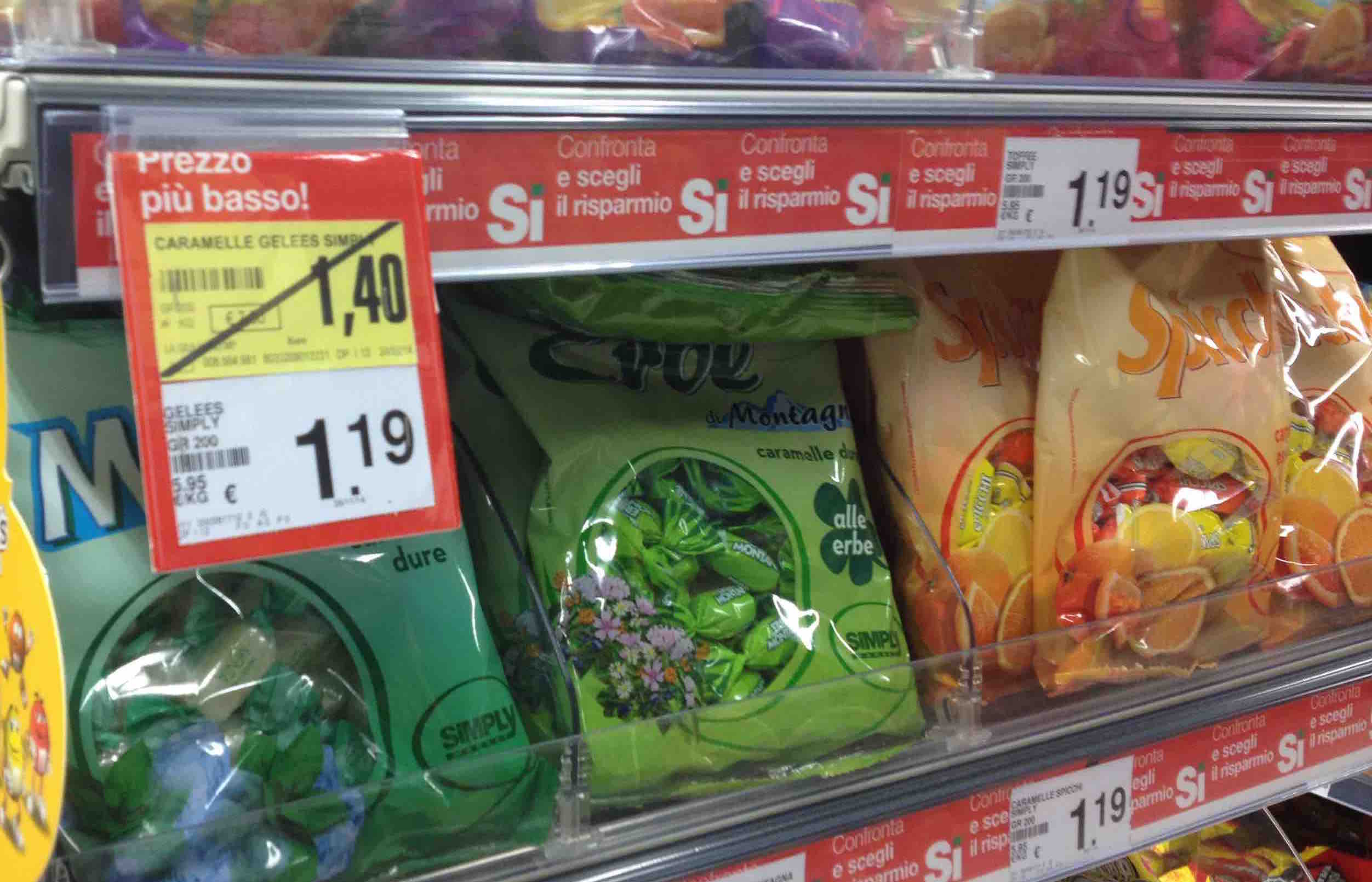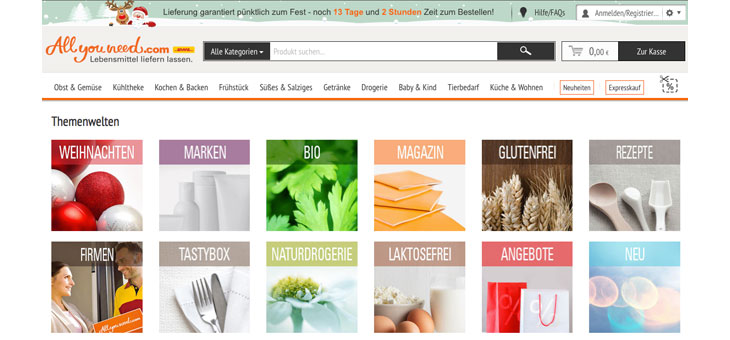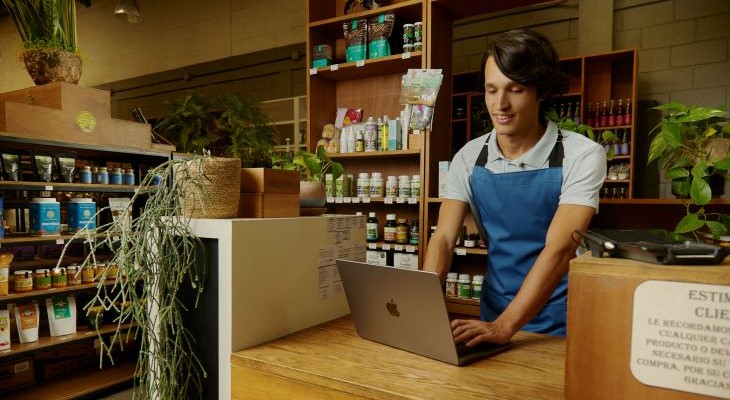What and how will we eat in 2015? A list of the 20 most important trends in the food sector has been published by the “Arabian Gazette” for the Gulfood 2015fair, to be held at the Dubai World Trade Centre (DWTC) from 8 to 12 February, global node of food product trade to emerging economies. We leave (literally) our backyard and go to see what happens in the global market and the Arabian high-end markets, which can also be of interest to our own food industry which is in extremely high demand. Many of these trends are also already arousing interest in the more receptive target markets at our latitudes. Here they are.
1 Gluten free – analyses to discover gluten intolerance, and consequently diagnoses, are on the increase. Packed gluten free products or the alternatives (cereals such as quinoa or amaranth) are becoming popular in all markets.
2 Clear labels – an increasing number of consumers are not content with vague claims of naturalness of a product: they demand clear and understandable labels, with nutritional and origin information. Not always do the laws (EU for example) support this desire. Apps for smartphones, on the other hand, do. From those for health to those which calculate the calories and nutritional aspects of a product by scanning the bar code.
3 Vegan and raw food – two food philosophies that will continue to influence restaurant menus (and supermarket shelves with the proposal of fresh produce and vegan friendly products)
4 “Good” fats and carbohydrates – goodbye to unsaturated and trans fats, olive oil and omega 3 fatty acids are increasingly entering the diet of those who care about their health. Blacklisted are also simple (refined) carbohydrates and artificial sweeteners. Among the emerging products is coconut sugar.
5 Fermented food – the health benefits of fermented foods, rich in live bacteria, will decree the growing success of yoghurt, kefir and fermented vegetables such as kimchi and sauerkraut. On the beverages front there are fermented teas such as kombucha
6 Alternative proteins – OK, we have always eaten them, yet in an effort to find alternative sources to meat protein, are insects really ready for global popularity? A lot of people are talking about them, from “Forbes” to the “Daily Mail”. Meanwhile, many are opting for more affordable algae, whey, legumes and timeless soy beans.
7 Smoking – hot or cold smoking with various types of wood migrates from meat to other foods: butter, cheese, vegetables, cocktails and even salt, sugar and paprika
8 Alchemy of spices – the diffusion of cuisine from around the world and the desire to limit salt intake (due to hypertension) has pioneered the use of spices and mixes to provide flavour and taste to dishes. Old and new: cumin, saffron, cardamom, but also harissa, sumac, zaatar, Aleppo pepper and Marsh pepper.
9 Seeds and nuts – as an ingredient in the kitchen or in snacks and bars, or in the form of flour as an alternative to wheat or to create vegetable cheeses (with almond flour for example), nuts are the protagonist since they are rich in minerals, vitamins, protein and omega 3 fatty acids.
10 Fusion of flavours – to stimulate demanding and bored consumers, manufacturers are trying out unusual flavour combinations. From the now classic (here with us) chilli and chocolate and cinnamon and orange, to wasabi and chocolate, sea salt and caramel, strawberries and beans, oysters and kiwi…
11 Matcha – the Japanese green tea, known for centuries, which comes as an extra-fine powder. It is rich in antioxidants and beta-carotene, so its use will leave the ghetto of Japanese restaurant green ice-cream to become the queen of hot or cold health drinks, also in canned, carbonated or milk-based beverages
12 … water – fizzy and sugary drinks, among the leading causes of obesity, especially in children, have long been under the crossfire of doctors and nutritionists. The world is looking for healthy alternatives. After coconut water, maple, cactus and watermelon waters, rich in minerals and vitamins and low in sugar and calories, will flood the market.
13 Consistency is taste – fragrant, soft, pulpy, in varying combinations in the same product: this is also how to conquer the consumer of 2015 (and beyond)
14 The packaging revolution – requirements are increasing: not only safety and hygiene, new packaging must be sustainable, recyclable, contain all the required information on the content, transmit the product history, ensure new features and create new experiences
15 Convenience foods – Urbanisation and the increase in the work force in emerging economies will also lead to a demand for prepared and packed food, lacking the time to cook at home
16 Food of animal origin from sustainable sources – top restaurants in Gulf countries are already meeting the desires of an international clientele.
17 Halal – already counts for one fifth of global food trade and in 2018 should be worth 1.6 billion dollars. Not just meat but also tinned and dairy products can be halal.
18 Local, zero kilometre ingredients – from meat to seafood to fruit, where possible it will be locally grown.
19 Health and organic – With increasing prosperity the diseases of affluence will also increase, and hence the demand for healthy, natural food, without additives: an industry that by 2018 will be worth $1.5 billion in emerging economies.
20 More meat. Hard to subscribe to, with all the alarms of doctors and nutritionists, but the demand for high-protein food such as meat and dairy products will increase in emerging economies, as too will the demand for halal meat slaughtered according to the dictates of Islamic law.







